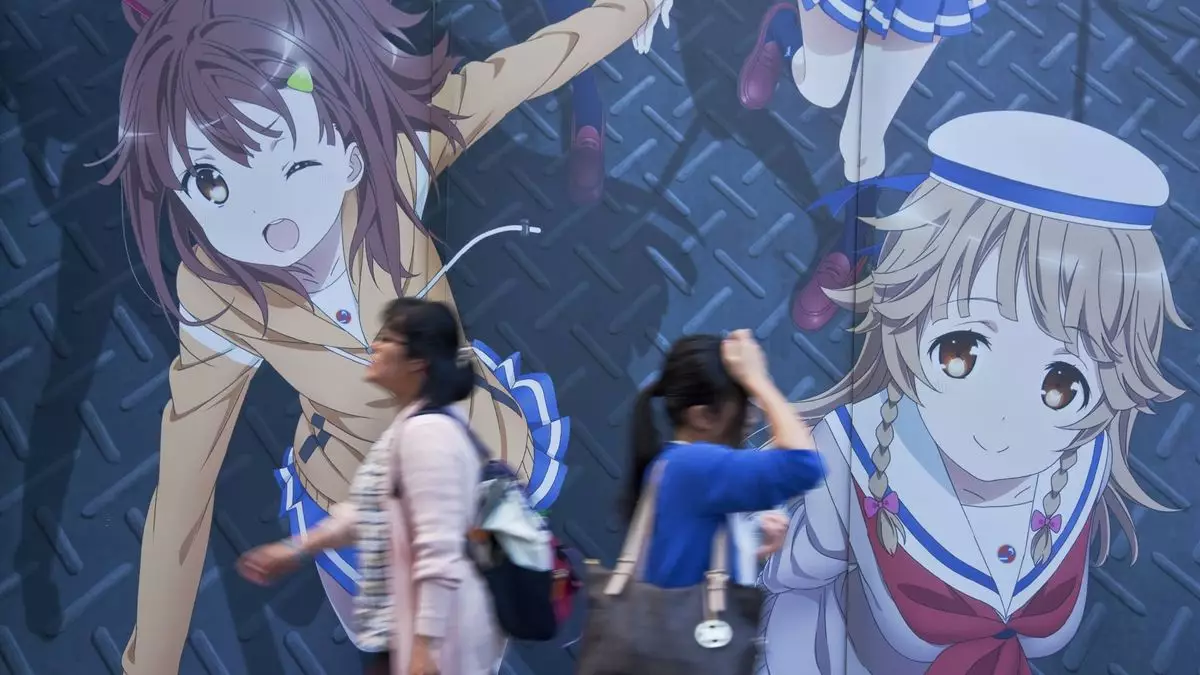As I indulge in the bustling world of TikTok, often falling prey to the endless scroll of captivating short clips and infectious trends, I can’t help but stumble upon the burgeoning phenomenon of AI-generated art. Just below the surface of catchy tunes and viral dances lies a new frontier sculpted by artificial intelligence. One of the standout players in this realm is OpenAI’s latest advancement, GPT-4o, which has raised the bar in AI image generation, making it a mixed bag of excitement and unease for creators and consumers alike.
The impressive capabilities of GPT-4o, integrating seamlessly into the user experience through a chat interface, present a tantalizing glimpse at the future of digital art. With the ability to imagine a range of styles—from the whimsical charm of Studio Ghibli to the pixelated worlds of Minecraft—it beckons users to explore their creativity in unprecedented ways. However, this very same technology also poses significant implications for the artistic community, stirring debates on originality, copyright, and the intrinsic value of human artistry.
Art in the Age of AI: Beyond the Surface
While it’s easy to be swept away by remarkable AI outputs, we should scrutinize the underlying realities of such advancements. The process of transforming a mere concept into a stunning visual—from a penguin mage to a captivating landscape—requires not only sophisticated algorithms but also a monstrous repository of data, mostly sourced from public domains and partnerships with companies that house extensive image libraries.
However, this data-driven approach raises ethical questions about attribution and ownership. The art world thrives on inspiration; artists have often built upon the foundations laid by others. But as AI becomes proficient at emulating styles, we must ask ourselves: Does this lead to genuine innovation, or does it simply recycle existing ideas, marking the death knell for originality?
The Tension Between AI and Human Artists
The very existence of AI in creative spaces can leave artists feeling threatened. While some may celebrate the democratization of art that AI facilitates—enabling anyone to produce aesthetically pleasing images with a few keystrokes—others see it as an encroachment that undermines their craft and passion. As an avid observer of artistic professionals, I empathize with their plight. Several talented individuals I know have already expressed their concerns about losing opportunities to inexpensive AI alternatives, fearing that creative prowess will soon be overshadowed by rapidly evolving technology.
OpenAI’s commitment to respecting artists’ rights is commendable, yet the reality remains that existing safeguards might not be enough. Despite claims of protecting creators, the allure of cheap generative art can encourage a culture of exploitation. Just as many companies may opt for stock images instead of hiring a graphic designer, the rise of AI art may embolden businesses to disregard the nuanced skill sets that professional artists bring to the table.
Cultural Implications and Perceptions
Cultural icons, such as Hayao Miyazaki, have voiced their apprehensions regarding the intersection of AI and artistry. Known for his profound storytelling and breathtaking animations, Miyazaki’s resistance to AI technologies stems not only from a defense of traditional artistry but also from a philosophical standpoint about the essence of creative expression. His vehement rejection of AI symbolizes a broader sentiment among artists who view this technology as an affront to the very human experience that drives art-making.
Miyazaki’s critique resonates deeply, highlighting the fear that AI could dilute the emotional and cultural richness embedded in art. Emotional depth, personal stories, and lived experiences distinguish human creations from those generated by algorithms. As we plunge deeper into an era dominated by artificial creativity, it’s crucial to remain vigilant about preserving the organic connections that art fosters, which machines simply cannot replicate.
Redefining the Future of Art
The emergence of AI capabilities like GPT-4o presents an interesting dichotomy: While it opens doors to enhanced creativity, it simultaneously threatens the livelihood of those whobring art to life. Society is at a crossroads, where we must critically evaluate our relationship with technology and redefine our expectations from art.
Instead of fully surrendering to the capabilities of AI, we can choose to view it as a tool that complements human creativity rather than a substitute. By integrating AI into the artistic process, creators can explore new styles and push the boundaries of their work while still applying their unique touch and perspective. This collaborative approach, if embraced, has the potential to enrich the artistic landscape rather than devalue it.
Ultimately, the rise of AI-generated art calls for nuanced conversations about creativity’s essence and where we choose to draw the line. As we navigate this complex landscape, we must advocate for and support human artistry to preserve the depth and vibrancy that only a human touch can provide.

